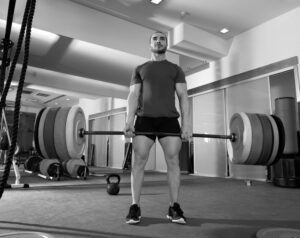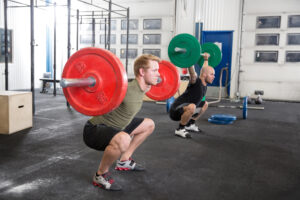Cycling performance – Part 2: What are the best exercises to improve performance?

[sgmb id=”1″]Welcome back! Last time we looked at the benefits of S&C training for cycling performance, this week we are going to look at what we can do to improve those key performance indicators.
Movement in most sport involves multiple joints and muscles working together to produce and absorb force. Cycling is no different so it is important to look at the key movements and the muscles involved in these actions. Below is a break-down of these movements and their contribution to cycling:
Knee extensors – 39% (quads)
Hip extensors – 27% (glutes and hamstrings)
Ankle plantar flexors (pointing ankle/toes down) – 20% (calves)
Knee flexors – 10% (hamstring group)
Hip flexors – 8% (Iliopsoas)
(1, 2)
(NOTE: Varies depending on bike set-up, riding style, gradient etc.)
In reality, there are multiple muscle groups working in harmony to produce the above actions so it is important to train these key movements, as opposed to targeting specific muscles in isolation (stay away from the gym machines!)
So we know from the last blog Cycling Performance – Part1 that strength and power training are effective tools in order to improve performance for cyclists, even at a professional level. We also know which movements are used in cycling so we now need to select appropriate exercises.
Squatting is classed as a ‘knee dominant’ exercise as the force is primarily generated at the knee and surrounding muscles. Deadlifting is a ‘hip dominant’ exercise as the force comes more from the hip. Both involve bending and straightening of the knee and hip in a multi-joint movement (AKA hip and knee flexion/extension).
Large amounts of force can be generated through squatting and deadlifting which will really improve strength levels, if performed correctly. We also know that increased strength levels has been shown to improve power output too (S&C for Combat Sport – Power!) so they are clearly fundamental exercises for cyclists to perform in training!
The nature of cycling, as with many other sports requires the athlete to generate the bulk of force on one leg at a time (uni-lateral) so this is another important consideration if we want to transfer the work we do in the gym to performance on the bike. Single leg squats, lunges and single leg deadlifts are fantastic exercises to develop single leg strength and address muscular imbalances you may have picked up over the years (imbalances may pre-dispose you to injury risk, but that’s a story for another blog!).
Once a good level of movement competence and strength has been developed, we can start to look at introducing power exercises for the lower body. Power output levels achieved in Olympic weightlifting (snatch, clean and jerk) are extremely high but the technical skill needed to develop effective technique can take some time to develop with an experienced S&C coach or weightlifting coach. However, there are variations on these lifts using dumbbells which require less skill or other derivatives available.
A more time effective method of developing power can involve exercises such as medicine ball throws or jumping movements such as vertical jumps, broad jumps, squat jumps, trap bar jumps and more. It is important to use a variety of loads from body weight to light-medium loads(40-50%) for exercises such as squat jumps and trap bar jumps but just make sure that the load is light enough in order to still move explosively without sacrificing technique (1).
Other key exercises include strength development in the calf and ankle which can be done through simple calf raises on a step or leg press machine (one of the few occasions where I recommend machines here!). As mentioned in the last blog, upper body strength and core strength do not need to be excessive. Pushing and pulling exercises such as press-ups, inverted rows and pull-ups are perfect choices for the cycling athlete as they involve an element or trunk work to stabilise the movement. They can be easily progressed through variations or the addition of weight but the high movement quality must be maintained throughout.
Extra work on the ‘core’ may include anti-extension exercises such as the deadbug, Aleknas or roll-outs, as well as anti-rotation exercises such as the pallof press, Russian twist or landmine barbell rotation. Chopping movements (cable chop, medicine ball chop) are good options that transfer force diagonally through the trunk and are more specific to sporting movements.
Summary: Quality of movement is crucial in order to develop strength and power safely but also to improve cycling movement efficiency and make every pedal stroke count. Muscle balance is crucial in any S&C programme so be sure to adopt a balanced training plan (e.g. pushing and pulling strength should be relatively equal).
In part 3 of this blog, I will be showing you EXACTLY how these fundamental exercises should be performed in the gym in order to develop real strength and power for athletic performance!
Thanks for reading, if you have any questions please comment below or contact me on [email protected] About Rob).
1. Jarvis, M. (2013). The Bike. In: Sarah Cole Strength annd Conditioning for Triathlon: The Fourth Discipline. London: Bloomsbury. p54-65.
2. Ericson, M. (1986). On the biomechanics of cycling. A study of joint and muscle load during exercise on the bicycle ergometer. Scandanavian Journal of Rehabilitation Medicine. 16, 1-43.


